The Industrialization and finding new opportunities in large cities has caused many villages of Spain are empty. They were villages with a lot of life –even though if they were small towns -- and even they had young people; But the years passed and those young people became very elderly, who refused to leave their land. But reality prevailed and those much older people dying or leaving, to the city, to help their children, among other things, with the important work of caring for grandchildren.
One of those villages was Otero de Sariegos, in Zamora, northwest of Spain. As its name suggests, it is a town on a knoll or hillock from where excellent views of the lagoons of Villafáfila and just like the plain where the people of Villarrin de Campos and settle Villafáfila are sighted. ''When we were waiting for a relative, who was delayed a bit, we went to the church wall and from there we could see all the way and saw where it came from''.
 Otero de Sariegos (Zamora), North western Spain
Otero de Sariegos (Zamora), North western Spain
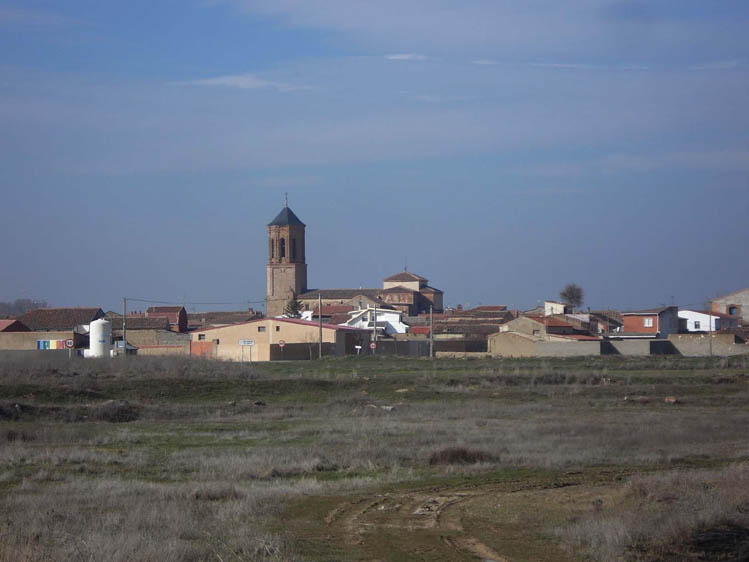 Villarrin de Campos (Zamora)
Villarrin de Campos (Zamora)
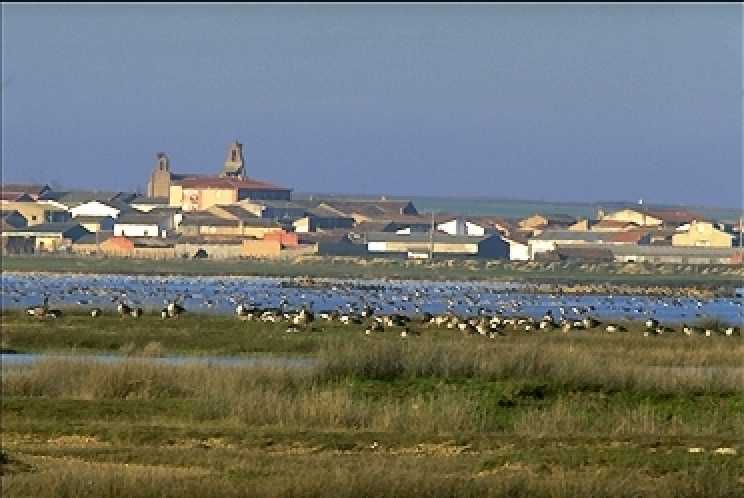 Villafáfila (Zamora)
Villafáfila (Zamora)
A nice village and rundown that once numbered about twenty houses. The houses were built of mud and adobe and, as this item carries poorly over time, many of the buildings are on the ground.
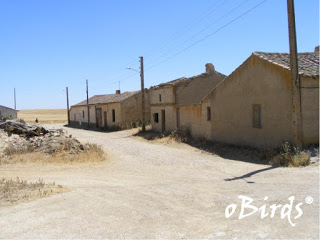
A street of Otero de Sariegos (Zamora)
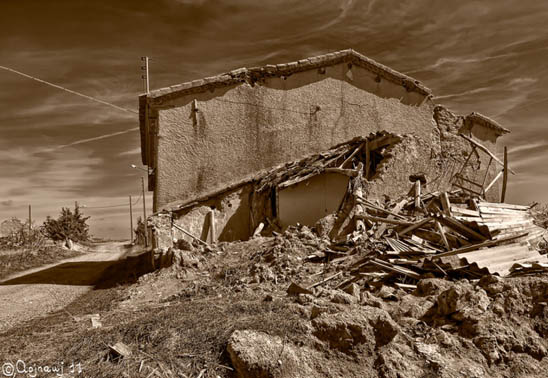
A collapsed house in Otero de Sariegos (Zamora)
Wheat and barley were the main products planted in their fields, while the mules, cows and sheep were the most representative animals in livestock.
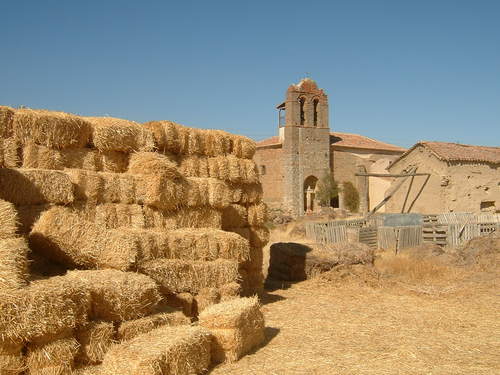
A barn in Otero de Sariegos (Zamora)
Its neighbors were partners in the Association of Farmers and Ranchers Brotherhood to manage and protect their interests. They had the figure of the rural guard who was in charge of monitoring the possible theft and livestock care to not to meddle in farmland and other issues.
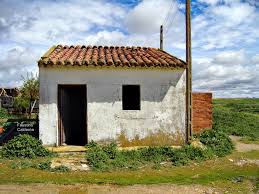
House for the Association of Farmers and Ranchers
They had an excellent farm pasture: Valdecasas meadow, where they carried to graze cattle and mules, which were not used in farm work. The cowboys played a cowbell in the morning through the village, so that the neighbors were taking their animals out. Miguel, from Villarin de Campos, and Julio, from Villafáfila, exercised this trade of jean for years in Otero de Sariegos.
.jpg)
A good farm pasture closed the lagoon
They celebrated their patron saint on April 25th (San Marcos). The firing of rockets and fireworks heralded the beginning of the party, where the mass had a great prominence, spectacular with some great songs, that put you a goosebumps. It was taken in procession to the Virgin through the streets of the village, with women being responsible for carrying the litter. The dance was performed in the afternoon and night, always inside a building as was the ground floor of the Ojero´s house to some panera (a rural building on stilts to keep the cereal) or some well-conditioned corral. The music was provided by an organ, that brought the brothers from Santacirila de Villafáfila; in more recent years, it was replaced by a turntable.
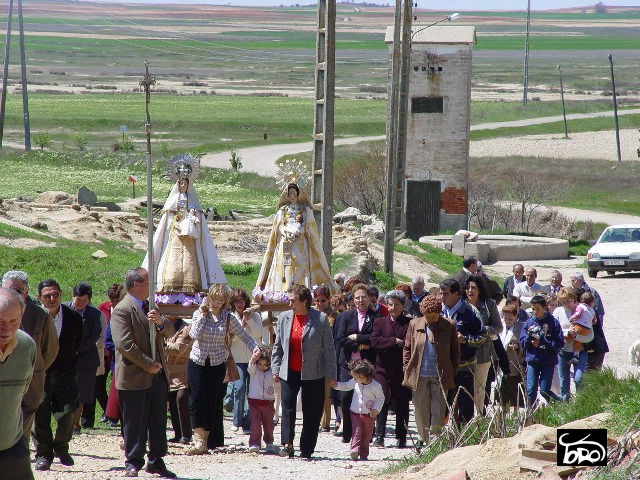
The procession in Otero de Sariegos
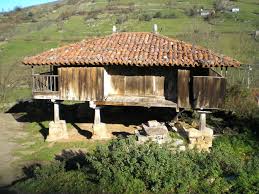
Panera
That day, a special food was cooked in the houses; but the star dish was the rice pudding prepared for the occasion, that had a lot of fame in all villages around.
Villarrin de Campos and Villafáfila were the villages where more people came to join the festivities.
On November 11, for San Martin, had a party again, but this time there was no procession.
The priest always came from Villarrin de Campos. Every Sunday was celebrated mass. Don Julian, Don Abdon, Don Agustin or Don Arcadio were some of the pastors who came to perform such an act.
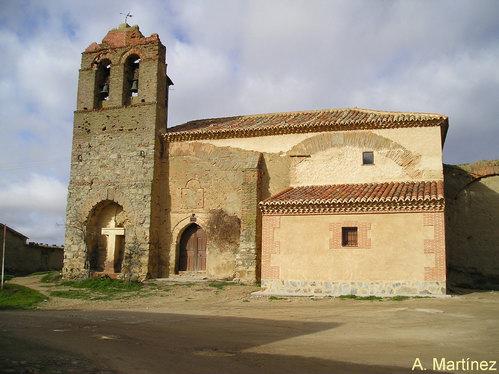
The Church of San Martín, Otero de Sariegos (Zamora)
The doctor (Don Daniel) came from Villafáfila; they had to go looking for him with a cavalry, in order that he displaces to Otero himself to visit the sick.
Agustin Miñambres, the mailman, came twice a week from Villarrin de Campos to bring all correspondence and even charged the pension, that the seniors wore too.
Theophilus, the barber, came from Villafáfila to cut hair in the houses, where he was requested.
They were going to grind grain to factory of flour of “La Tabla”, where they gave wheat and returned them the equivalent in flour.

Factory of flour, "La Tabla"
The busiest day in Otero de Sariegos was Thursday, that was the day market, in Benavente (Thursdays from Benavente), it was customary for the people from Otero and all the peoples of the region to go that day to Benavente, to sell an animal, to purchase products or just for spend the day, although they did not make anything special. They had to wake up at two in the morning to walk the eight miles that separated them from the railway station of La Tabla and take the train to Benavente. Years later had a car line, that came out of Villanueva del Campo and gathered the people of all the villages of the region to move them to Benavente. The people from Otero also had to get up early because they had to be at the junction of the road, at eight in the morning, when the carriage passed.
To a lesser extent they also went to the markets of Zamora (Zamora twelve) by the same means of transport.
Always products and all kind of necessaries were purchased the day when they went to Benavente; but they moved to Villarrin de Campos and Villafáfila, where they had a trading, to make simpler shopping.
And the peddlers were responsible for bringing products, that Otero had not in the village, as they were the Toresanos, who with a mule cart in roping (a mule in front of the other, not both in parallel) they had peppers, tomatoes, onions, etc.. With a cart appeared another peddler from Villalba de Lampreana, who went selling rice, oil, sugar ...
When they had a road, a seller from Villafáfila went, with vehicles of the time, selling utensils and furnishings as the famous Duralex plates, so popular these years. The first time that he brought them, he sold everything in a heartbeat, because they were the novelty, but Francisco Montero recalls a funny story that took place that day:
“As it was a new, the man came boasting plates and they were unbreakable, he let them fall to the ground slightly and they did not break, the grown man with his show, grabbed a plate and rose into the sky above heads, falling to the floor plate was shattered. The good man did not know where to get the laughter and ridicule of the women who were there buying''.
Usually every home used to have its furnace, where apart from the delicious bread, were prepared pastries and muffins. Years later they allowed to bake bread and it was brought by the baker of Villafáfila.
The youth moved on Sunday to Villarrin de Campos or Villafáfila, where there was dancing and theater, in both villages, ''We were going to one or the other one, depending of the love interest or friendship, that we had at the time'', apostille Francisco Montero.
In the early 60s, there was a resurgence in the life of people, with two events, that made life easier for the people from Otero: the arrival of the road and electricity.
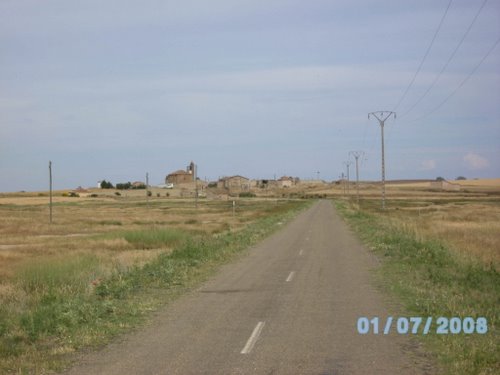
The road and electricity in Otero de Sariegos
These facilities came when Don Ignacio Montero was Mayor of Otero de Sariegos.
The light was a novelty and it replaced the oil lamps of carbide, which the people of Otero were lit at night.
''It was brought from a power plant, that was in Aspariegos, property of Aquilino Gato; it cost 25,000 pesetas the bringing, that was in October of 61'', Francisco Montero recalls.
The other breakthrough (the road), was very necessary, because before it was a trail and put impracticable in winter, cause of mud and water, because there were many wetlands, and sometimes you could not go ahead.
“About the year 60 the construction of the road started by a contractor from Salamanca, Ramiro Gullón , it was a mile long and half a mile it became a pickax and shovel. It cost 63,000 pesetas. The work was stopped for two years. It had been already built a mile , but a quarter mile before reaching the village, the road was to occupy a part of a farm next, to what the owner objected. The road remained stagnant here. There was a trial and the council lost it , so to pay the costs and delays, they had to parcel out in parts of the prairie Valdecasas and each neighbor to lease a plot to bring there livestock so they can cover the costs of the trial. After a time, the good lady , possibly with remorse of conscience for the damage caused to the people with his refusal, she gave permission for the road could go through their land and gave final approval of the work'', said Francisco Montero.
Although the early 60s were good years for the village, even got to know the phone when it only had two open houses, not so with the 70s, this decade saw a major departure from neighbors looking for a better quality of life.
Villarrin de Campos and Villafáfila absorbed almost equal to the people from Otero, who went out of the village.
The solution of the municipality of Otero de Sariegos, because the village was eroding much of the population, was the beginning of the end for Otero. The neighbors, who stayed there, choosed by voting to be incorporated into the municipality of Villafáfila. The Brotherhood of Farmers was integrated into Villafáfila, land consolidation was made, so the neighbors, who stayed there chose to go to the two nearby villages, where there were more facilities and better services and from there they could keep it going to work the land of Otero. If you add the lack of water in homes and the closure of the school, you will understand the twilight of Otero de Sariegos.
Yet two persons held a breath of life in the village, until a few years ago.
So it is told by Francisco Montero: “When we all checked, stayed on one side Maria, who was a widow and, on another side, Porfirio Alonso, who was single. While Mary in recent years she spent time in Villafáfila and another time in Otero, she was not continuously there and, however, Porfirio lived the whole year in the village, so you can say that Porfirio was the last of Otero de Sariegos. He was a man of over eighty years, living without water at home and a little bit insecure. He went out of Otero, on November 21, 2003. The last afternoon, I was with him in Otero, I talked a bit with him and he reported me it --¨ The next day in the morning, I leave, I have never left Otero rather than go to military service, but with a great regret I will not be right back ever--¨. Word that he has fulfilled, because Porfirio, almost 95 years old, is living in the residence of Benavente''.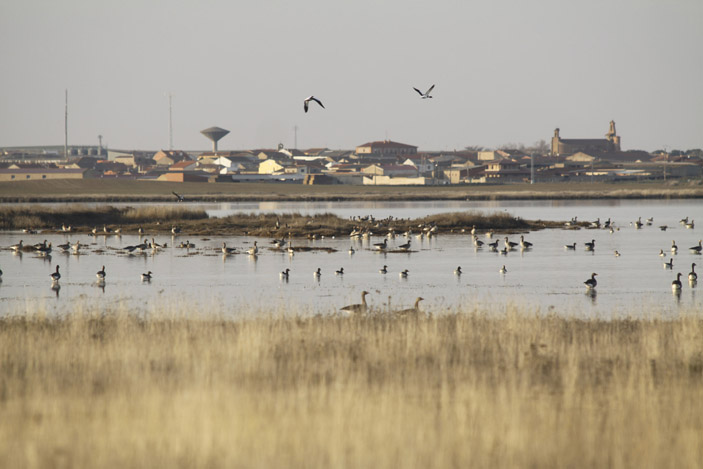
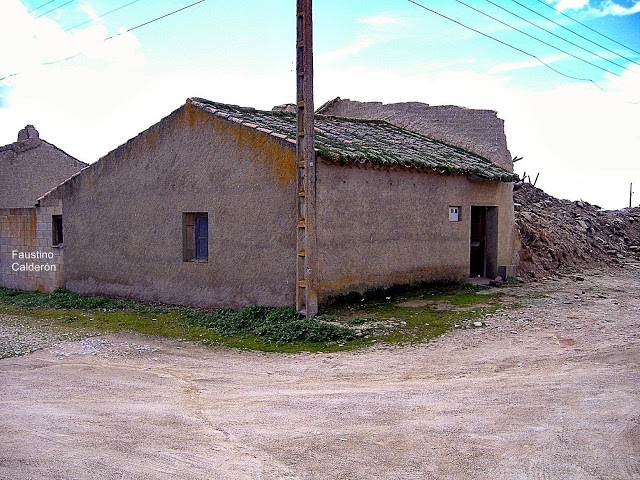
Porfirio´s house, Otero de Sariegos (Zamora)
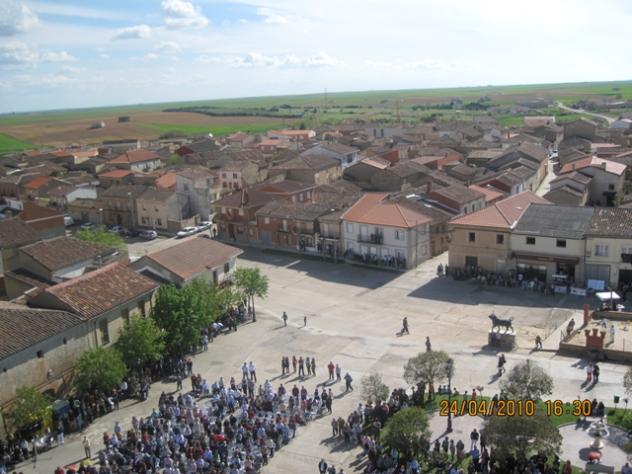
Villarrin de Campos (Zamora)
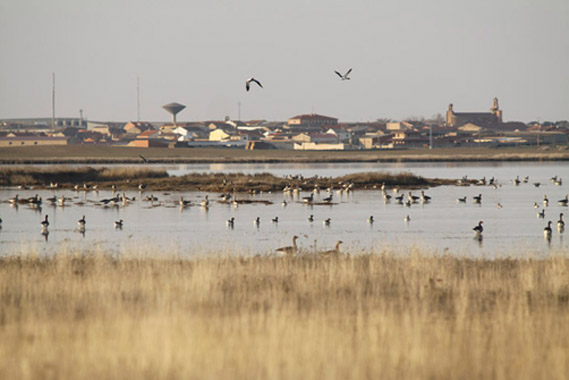
A view of Villafáfila (Zamora)
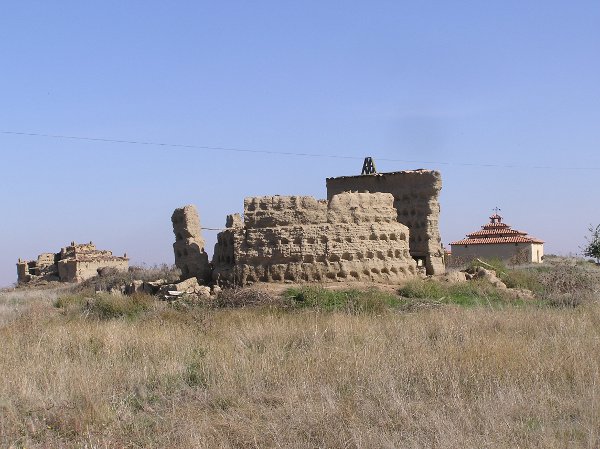
A pigeon loft to criate pigeon chicks in Otero de Sariegos (Zamora)
Well, I hope that you have enjoyed with this article. And I hope that you can visit Spain, in order to can go to this area of Zamora.
Till soon, kind regards,
Luis.
Sponsored by Costaluz Lawyers.
Please click down here:
